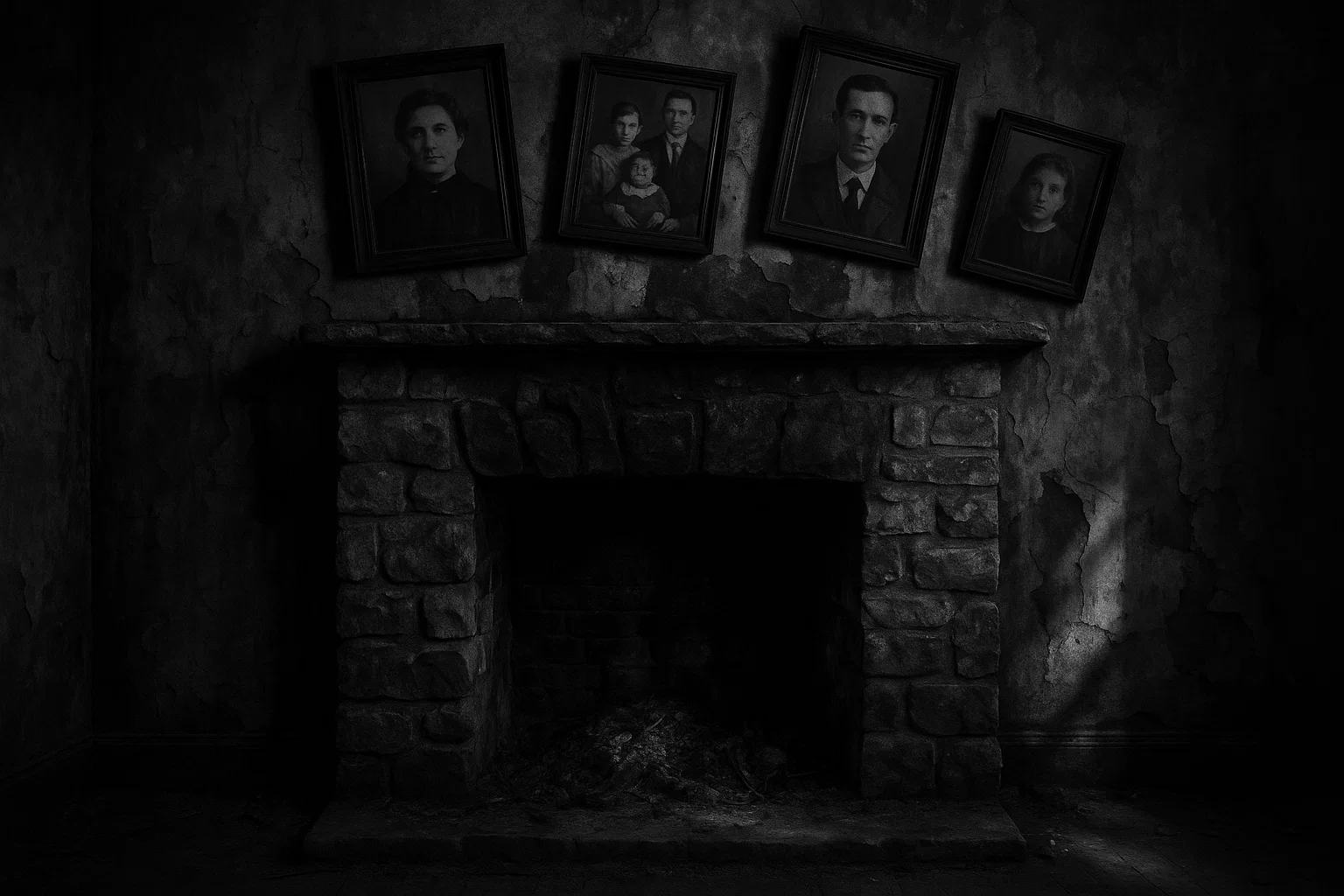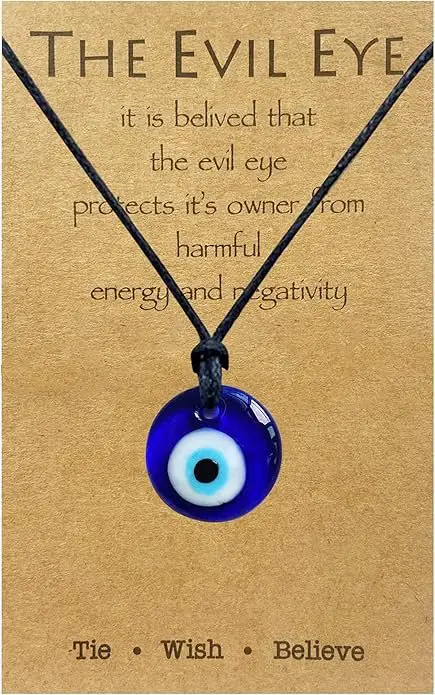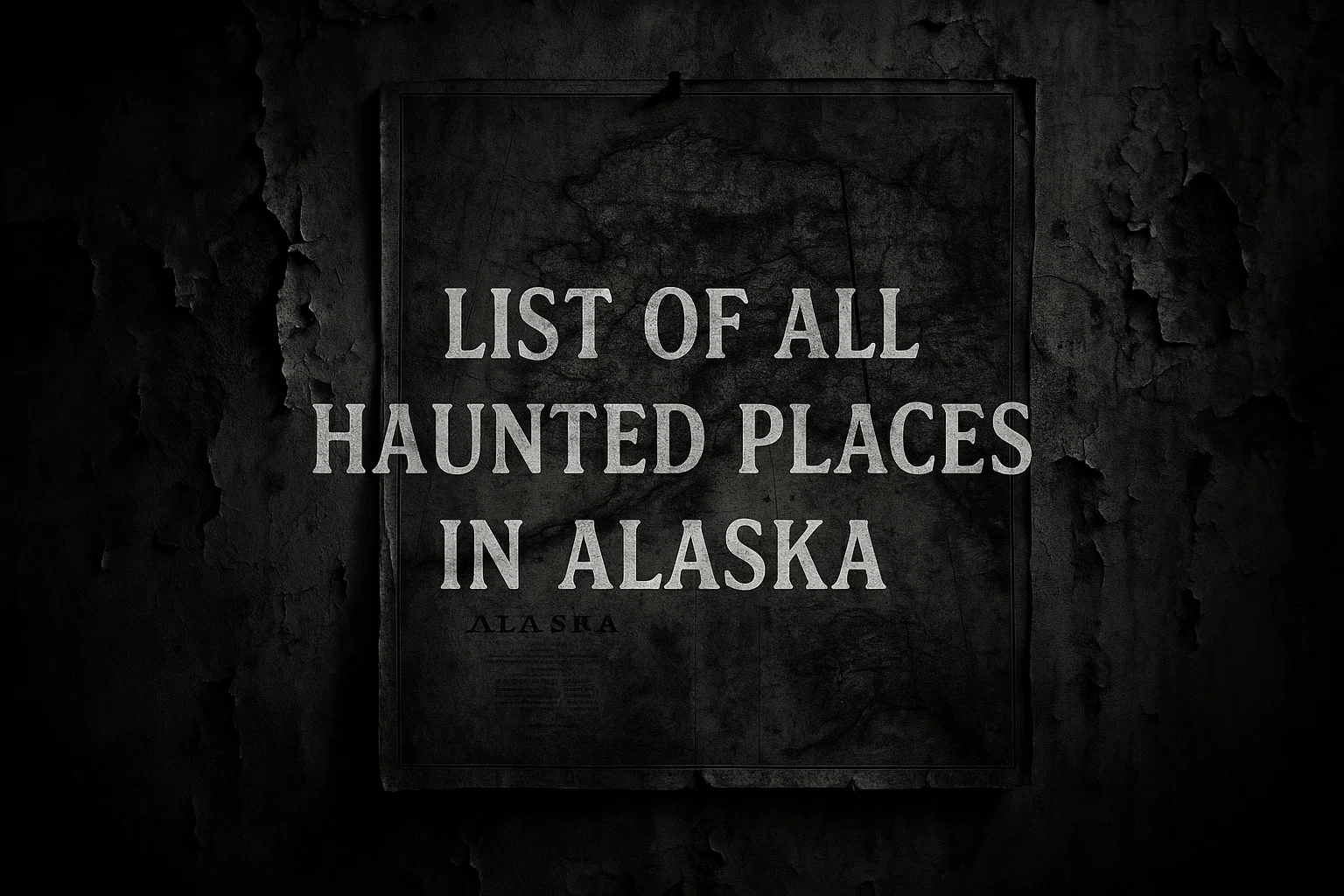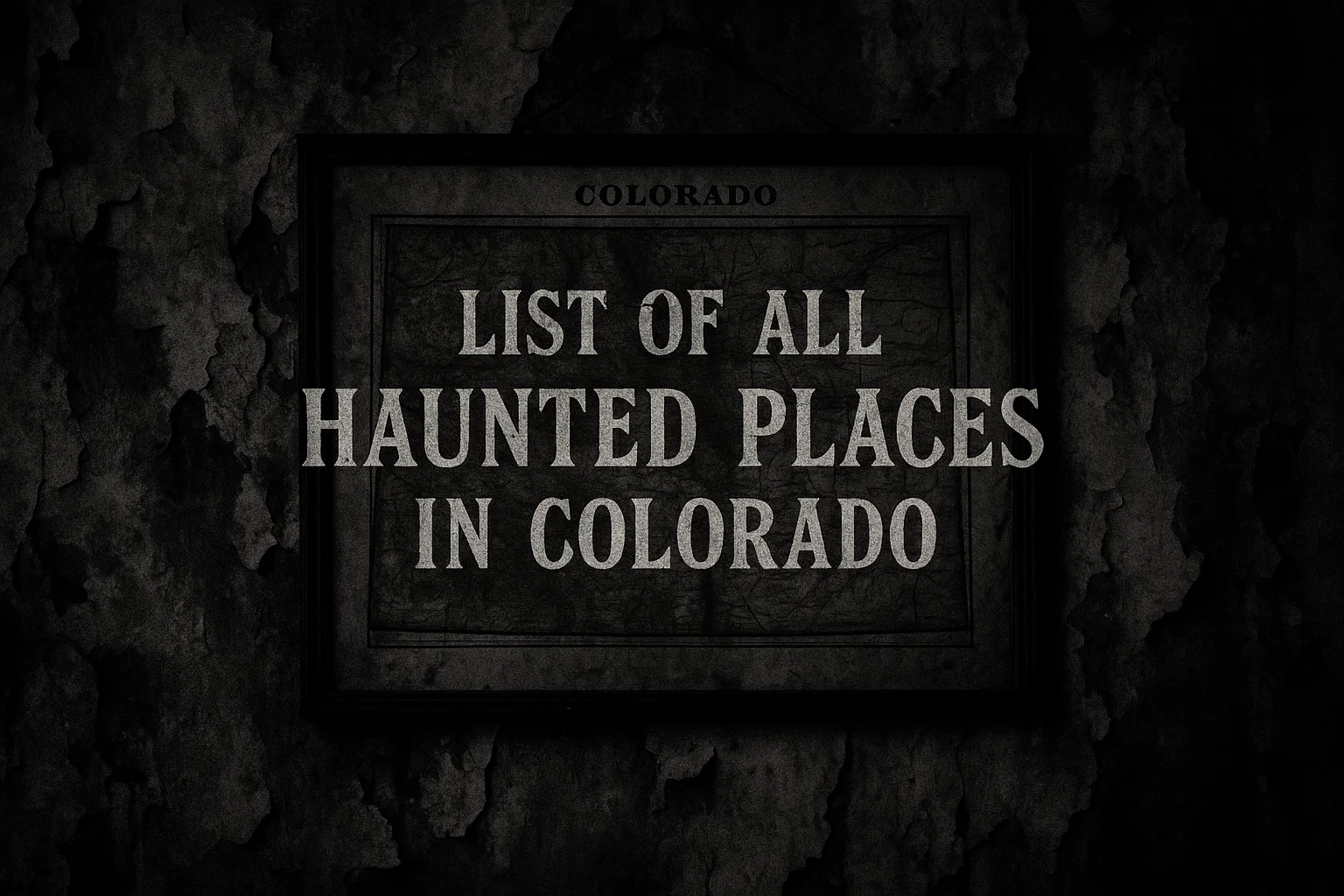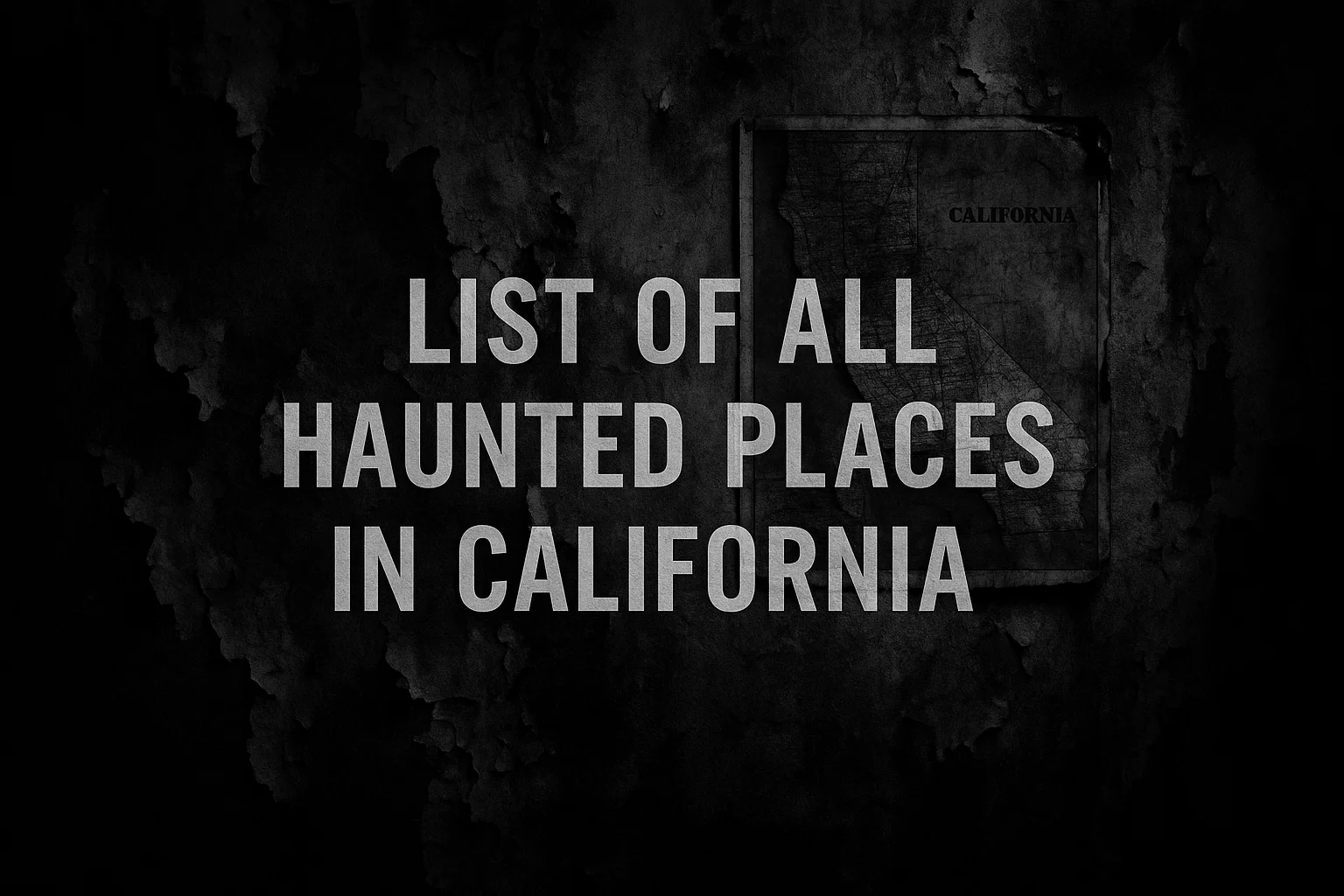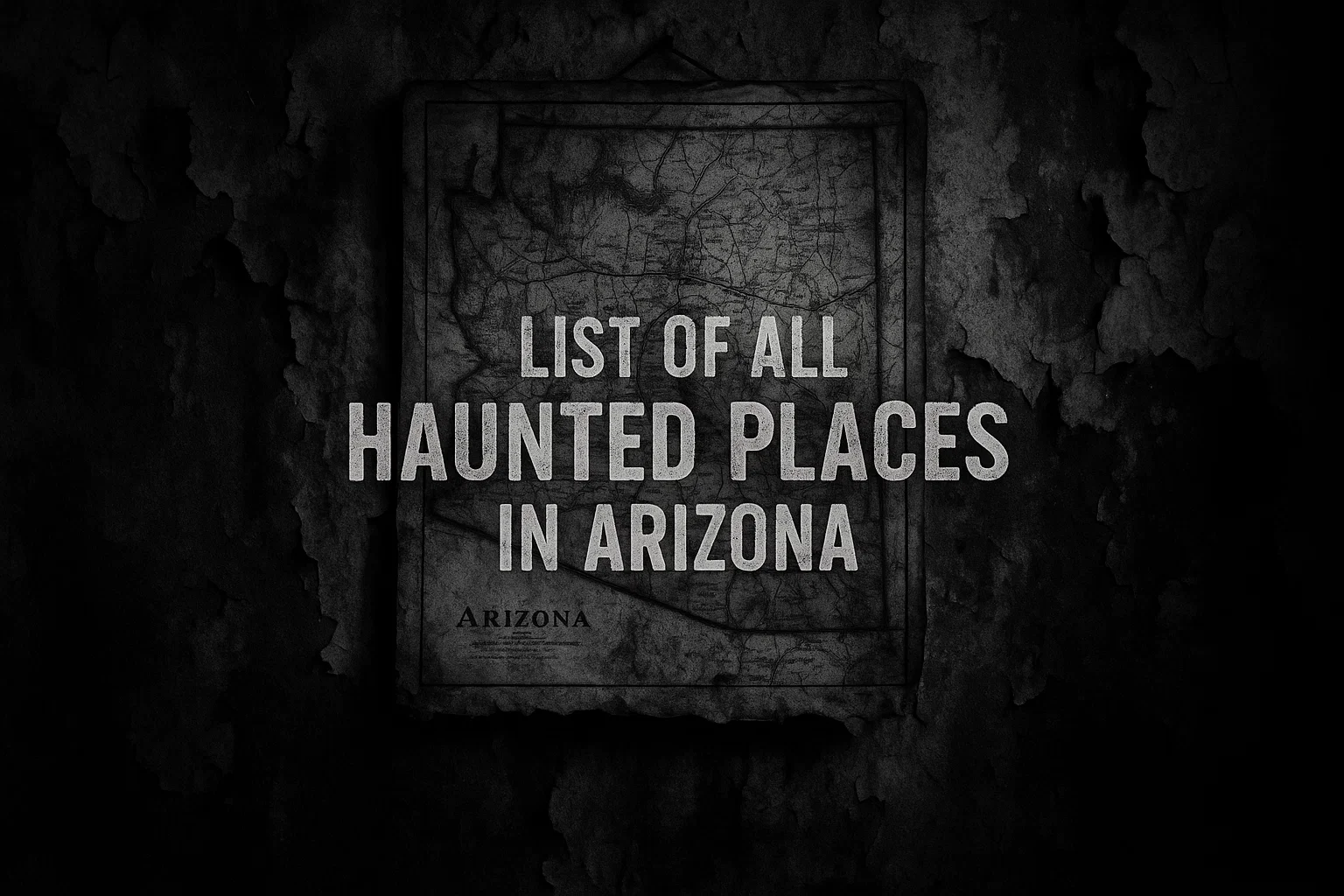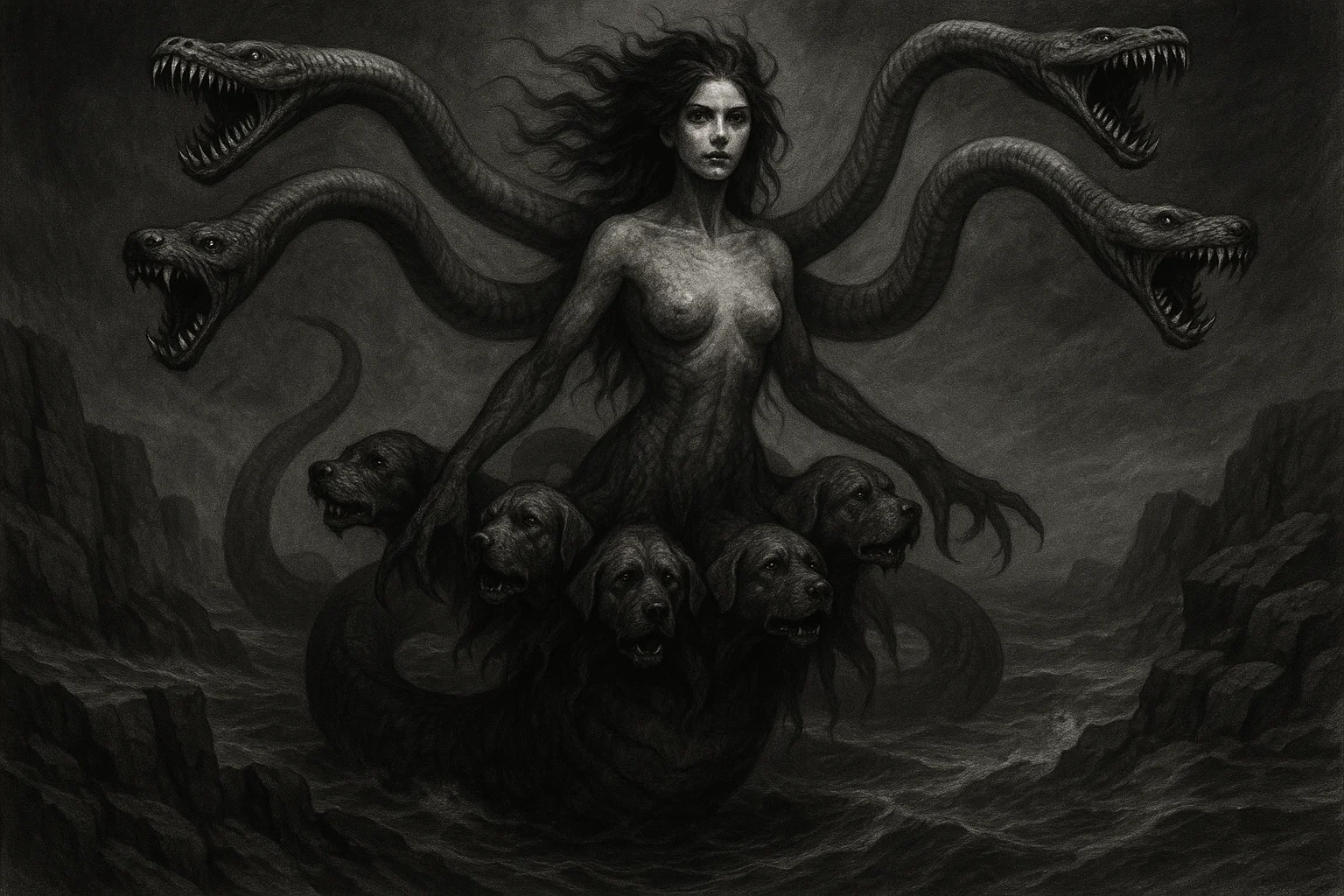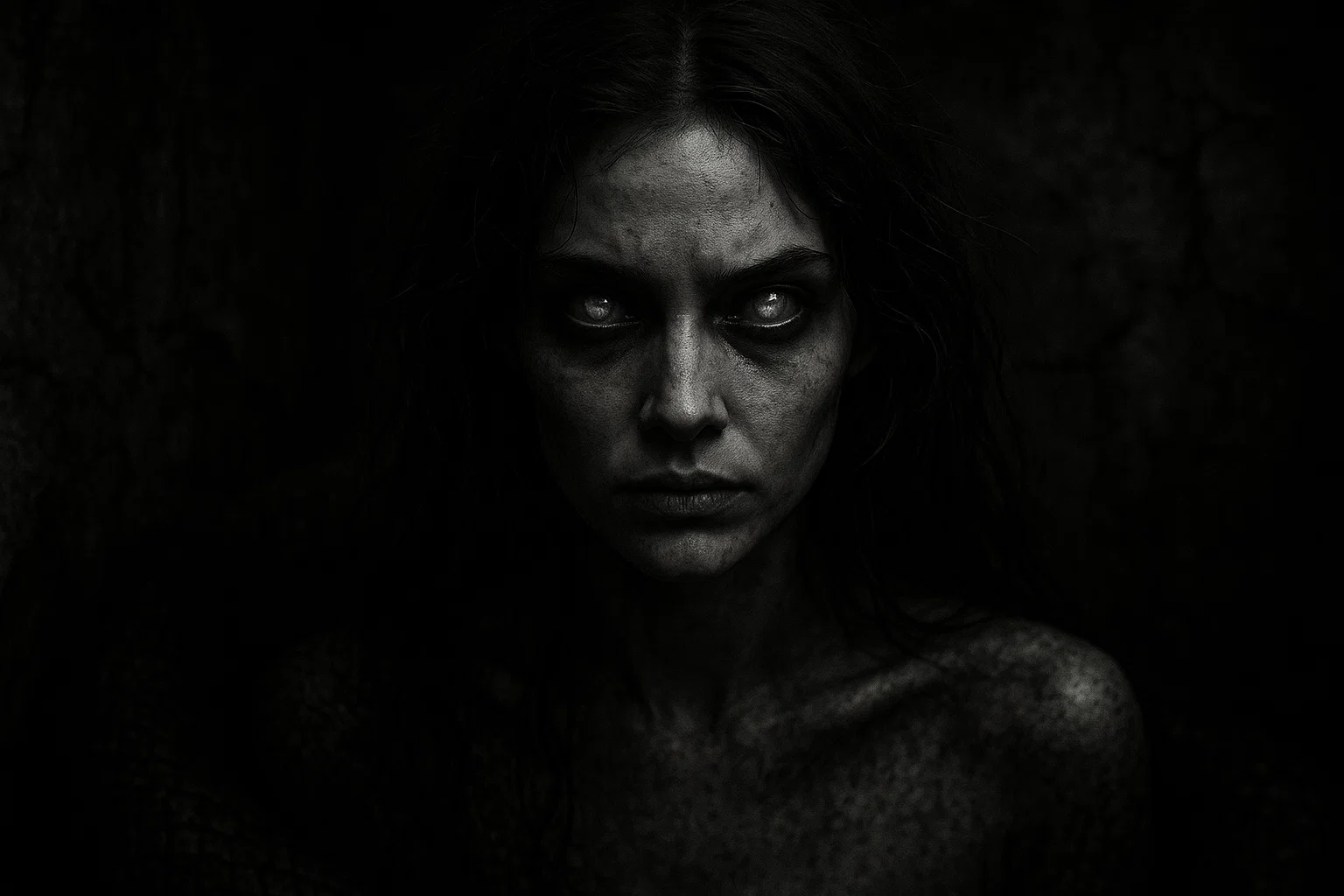From the Greek Revival columns of the Forks of Cypress in Florence to the Italianate elegance of the Jemison-Van de Graaff Mansion in Tuscaloosa, these haunted houses in Alabama are said to be haunted by many restless spirits.
Reports of apparitions, disembodied voices, and unexplained physical disturbances, documented by paranormal investigators and local lore, position these sites as focal points for exploring Alabama’s layered past, where human triumphs and tragedies resonate beyond the grave.
Summary
The Drish House
The Drish House (also known as Monroe Place) is a historic plantation house located in Tuscaloosa, Alabama.
Constructed in the 1830s by physician and contractor John R. Drish and his wife, Sarah, it served as the centerpiece of a 450-acre plantation during a period when Tuscaloosa was the state capital and the University of Alabama had recently been established.
Over the decades, the property transitioned from a private residence to a public school in 1906, a church in the mid-20th century, and an auto parts warehouse, before falling into disrepair by the 1990s.
Following extensive restoration efforts led by the Tuscaloosa County Preservation Society and private owners, the Drish House reopened in 2016 as a premier event venue. However, its turbulent history has contributed to its enduring reputation as one of Alabama’s most haunted houses.
The house’s association with tragedy began with the Drish family. John Drish, known for his penchant for gambling and alcohol, reportedly fell to his death from the mansion’s grand staircase in 1867. His widow, Sarah, descended into grief and eccentricity, amassing hundreds of white candles that she stored throughout the home.
Upon her death in 1884, her unfulfilled wish to be surrounded by these candles at her bedside is said to have ignited the property’s paranormal lore. Subsequent owners and visitors have reported eerie lights emanating from the tower, interpreted as Sarah’s spirit attempting to fulfill her desire, along with cold spots, disembodied voices, and apparitions of a woman in white.
Folklore amplified these accounts in Kathryn Tucker Windham’s 1969 collection, 13 Alabama Ghosts and Jeffrey, where the Drish House features in the story “Death Lights in the Tower,” solidifying its status as one of the state’s most iconic haunted houses.
Paranormal investigations, including those by the Tuscaloosa Paranormal Research Group, have captured electronic voice phenomena (EVPs) and unexplained sounds, suggesting residual energies tied to the family’s misfortunes and the home’s later uses as a school and warehouse. Despite its dark reputation, the restored mansion continues to host community events, blending historical preservation with subtle nods to its ghostly inhabitants.
Rocky Mount
Rocky Mount, situated near Prattville, Alabama, in Autauga County, is a historic site that encompasses a late-19th-century residence, church, and cemetery, reflecting the area’s early settlement along Cobb’s Ford. Established in the 1820s by pioneer families, the property features a Methodist church built around 1906, replacing an earlier structure from 1827, as well as a cemetery with marked burials dating back to the 1890s.
The main house (constructed in 1891 and expanded in 1908) transitioned from a private residence to a bed-and-breakfast before becoming a venue for weddings and events.
Paranormal interest centers on the spirit of “Aunt Mae,” the great-aunt of a former owner, whose affinity for music persists beyond her lifetime. Known for nocturnal piano sessions at a nearby church—often in her nightgown—Mae’s apparition is linked to unexplained melodies echoing through the house and sudden cold spots in musical areas. Guests and staff report doors creaking open without cause and faint keyboard notes at midnight, evoking her restless enthusiasm.
You May Also Like: 15 Most Terrifying Haunted Hotels in Alabama
Purifoy-Lipscomb House
The Purifoy-Lipscomb House stands as a well-preserved example of mid-19th-century vernacular architecture in Furman, Alabama, a small community in Wilcox County.
Built around 1840 by the Purifoy family, one of the earliest settlers in the area, the home features a simple yet elegant design akin to nearby structures, such as Fox Hill, which local builder Edmond Hobdy likely constructed. It remained in the Purifoy lineage for over a century, until its sale in 1987, when it passed through the ownership of the Hollemans and Estes families before being acquired by the Lipscombs in 2000, who maintain it as a private residence.
Why Do So Many Successful People Secretly Wear a Little Blue Eye?
Limited time offer: 28% OFF. For thousands of years, the Turkish Evil Eye has quietly guarded wearers from the unseen effects of jealousy and malice. This authentic blue glass amulet on a soft leather cord is the real thing – beautiful, powerful, and ready for you.
The property’s haunted reputation originates from the tragic tale of an enslaved man who perished while digging a well behind the house during Dr. John Harrod Purifoy’s tenure. Legend holds that a cave-in buried him alive, his final cries echoing as the structure collapsed; his unrested spirit now manifests as wailing sounds from the well site and shadowy figures on the front porch.
This narrative, immortalized in Kathryn Tucker Windham’s 13 Alabama Ghosts and Jeffrey as “If Thou Should’st Mark Iniquities,” highlights themes of injustice and lingering sorrow, positioning the property as one of the most haunted houses in Alabama.
The Plantation House
The Plantation House in Prattville, Alabama, represents an early example of Federal-style architecture in Autauga County, dating back to the 1830s, when industrialist Daniel Pratt founded the town.
Originally part of the burgeoning cotton economy, the structure served as a private residence before evolving into a bed and breakfast in recent decades. However, its future as a hospitality site remains uncertain under current ownership.
Paranormal reports focus on the apparition of Mr. Davis, a 1920s owner whose flirtatious demeanor persists in spectral form. Guests describe gentle touches on backs, warm breaths on necks, and shadowy figures in mirrors, particularly affecting female visitors in upstairs rooms. These strange encounters suggest a playful rather than malevolent spirit.
Davis’s spirit is tied to the home’s interwar prosperity, when Prattville’s mills boomed, and his untimely death left an imprint of unresolved energy. While activity has waned with reduced overnight stays, anecdotal evidence from events persists, fueling its inclusion in regional ghost lore.
Forks of Cypress
The Forks of Cypress plantation, near Florence, Alabama, in Lauderdale County, exemplifies early Greek Revival architecture in the Tennessee Valley region.
Founded in 1818 by Irish immigrant James Jackson on land purchased from Cherokee chief Doublehead, the 3,000-acre estate included a grand mansion completed in 1830, designed by architect William Nichols—the same mind behind the original University of Alabama campus.
Hauntings are linked to the estate’s dual cemeteries: the fenced Jackson plot and the unmarked slave burial ground, where EVPs of cries and marching footsteps have been recorded. Visitors report orbs near the columns—remnants of the 1966 fire—and apparitions of enslaved figures traversing the grounds, possibly Jackson’s workers or Cherokee displaced by removal policies.
The nearby “Ghost Bridge,” rumored site of 19th-century slave executions, amplifies the site’s residual energies, marking Forks of Cypress as a profound entry among haunted houses in Alabama—or rather, their ruins.
You May Also Like: Belle Mont Mansion Haunting: Ghosts of Slavery and Tragedy
George O. Baker House
The George O. Baker House in Selma, Alabama, is a mid-19th-century Neo-Classical residence that encapsulates the city’s antebellum commercial vitality.
During the Civil War’s Battle of Selma in April 1865, the house sheltered civilians amid Union advances, its sturdy build enduring the conflict that devastated much of the city.
The hauntings trace to a Union soldier’s desperate crawl beneath the staircase during the battle, where he succumbed to wounds, leaving faint bloodstains that defy cleaning. Residents report rhythmic footsteps ascending stairs at night, cold drafts from the crawlspace, and shadowy forms in peripheral vision, evoking the soldier’s final moments.
Paranormal teams, including the Tuscaloosa Paranormal Research Group, have documented EVPs of pleas for aid, linking activity to the chaos of the battle.
JW Whatley House
The JW Whatley House (also known as Woodland) was a late-19th-century residence located near Moundville, Alabama, in Hale County, emblematic of the Black Belt’s distinctive agrarian architecture.
Built in the 1890s on land adjacent to the ancient Mississippian mounds, part of the UNESCO World Heritage Site, the home reflected the area’s post-Reconstruction cotton economy, with simple frame construction suited to rural life. Owned by J.W. Whatley, it stood until demolition in the late 20th century; its site is now integrated into the broader Moundville Archaeological Park, managed by the University of Alabama.
Ever Walk Into a Room and Instantly Feel Something Watching You?
Millions have used burning sage to force out unwanted energies and ghosts. This concentrated White Sage & Palo Santo spray does the same job in seconds – just a few spritzes instantly lifts stagnation, breaks attachments, and restores peace most people feel immediately.
Hauntings are attributed to the house’s construction over former slave quarters and a cemetery, where disturbed remains fuel unrest. Before demolition, occupants reported hearing unexplained knocks, witnessing objects shift autonomously, and experiencing oppressive presences, with shadows lingering in empty rooms.
Post-removal, the grounds report similar anomalies—orbs and whispers—suggesting energies unbound by structures, aligning with Moundville’s own spectral drumbeats and lights.
Jemison-Van de Graaff Mansion
The Jemison-Van de Graaff Mansion in Tuscaloosa, Alabama, is an Italianate masterpiece constructed between 1859 and 1862 for Robert Jemison Jr., a state senator and planter. Designed by architect Samuel Sloan and supervised by John Stewart, the 26-room residence featured advanced amenities, including coal-gas lighting and plumbing. Jemison’s “town house”, amid his vast rural holdings, hosted political gatherings until he died in the mansion in 1871.
Subsequent owners included the Van de Graaff family—prominent in law and science, with physicist Robert Jemison Van de Graaff born there in 1901—and served as Tuscaloosa’s public library from 1955 to 1979.
However, tragedy marked the Jemison lineage: daughter Priscilla’s grief over her fiancé’s Civil War death led to her suicide by defenestration in 1865, followed by her mother’s decline and passing eight years later. Visitors report a female apparition in the tower—Priscilla’s silhouette gazing outward—and cold spots on staircases, with EVPs capturing sorrowful whispers.
Paranormal groups, including those hosted by director Ian Crawford, have documented anomalies like equipment failures near portraits, attributing them to familial unrest. All these elements make the Jemison-Van de Graaff Mansion one of the most haunted houses in Alabama.
You May Also Like: What Is a Vila? The Beautiful Yet Deadly Spirit of Slavic Myth
The Trotter House
The Trotter House on Selma Avenue in Selma, Alabama, is a late-19th-century Victorian residence that embodies the city’s post-Reconstruction domestic architecture. Built in the 1880s as a boarding house during Selma’s cotton resurgence, the two-story frame structure with gabled roof and wraparound porch served transient workers and families amid the Black Belt’s economic revival.
Paranormal activity escalated upon the Trotters’ arrival, with jars falling unprompted, lights flickering autonomously, and orbs captured on film—phenomena intensifying around a young man’s fatal 1950s car crash, his body laid out in the dining room for viewing. Shadowy figures flit at the edge of vision, disembodied footsteps traverse the halls, and knocks echo from empty rooms, suggesting intelligent interaction.
Featured on Fox’s “Encounters” and Alabama Public Television, these manifestations have made the house a modern classic among the most haunted in Alabama.
However, the presences appear non-malevolent, with activity waning after the daughters’ departure, implying familial ties.
Sweetwater Mansion
Sweetwater Mansion is a Georgian-style plantation house that anchors Lauderdale County’s antebellum heritage. Built in 1828 by War of 1812 veteran General John Brahan on his 4,000-acre estate, the brick residence—named for the adjacent waterway—was completed in 1835 by Brahan’s son-in-law, Robert M. Patton, who later served as Alabama’s Reconstruction-era governor. Featuring Italian marble mantels and a boxwood hedge imported from London, it symbolized early Tennessee Valley prosperity in cotton and textiles.
The basement served as a Civil War hospital and later as a county jail, while the upstairs rooms hosted political gatherings led by Patton. Abandoned for decades after Jessie Weedon’s 1976 death, it was sold in 2023 to Baron Hospitality for restoration, with a prior National Register listing in 1976 safeguarding its legacy.
Hauntings abound, from a “Mystery Hole” in the basement—rumored occult site or hidden chamber—to apparitions of 19th-century women in parlors and children’s laughter in vacant nurseries.
Caretakers report phantom caskets with Confederate soldiers and humming voices from walls, investigated on Paranormal State (2011) and Most Terrifying Places (2019). A room that locks women inside evokes gendered unrest, cementing Sweetwater among Alabama’s most active haunted houses.
You May Also Like: Orobas: The Demon Who Corrupts With Truth, Not Lies
Richards DAR House
The Richards DAR House in Mobile, Alabama, is an Italianate townhouse exemplifying the Gulf Coast’s mid-19th-century opulence.
Managed by local Daughters of the American Revolution chapters since 1973, the museum operates as a historic site, offering tours and events, and features restored elements such as Bohemian-stained glass and a cantilevered mahogany staircase that preserve its antebellum grandeur.
Paranormal activity appeared after the restoration, with docents reporting disembodied children’s laughter on the stairs—echoing the Richardses’ 12 offspring, several of whom died young—and apparitions of elderly women at parties.
The Delta Paranormal Project’s 2013 investigation yielded EVPs of whispers, toy movements in the “Boys’ Room,” and a silhouette of a frock-coated man in photos, suggesting familial benevolence. Caroline’s ghost, gazing from the red bedroom, and playful poltergeist pranks mark the house among Mobile’s most haunted houses.

